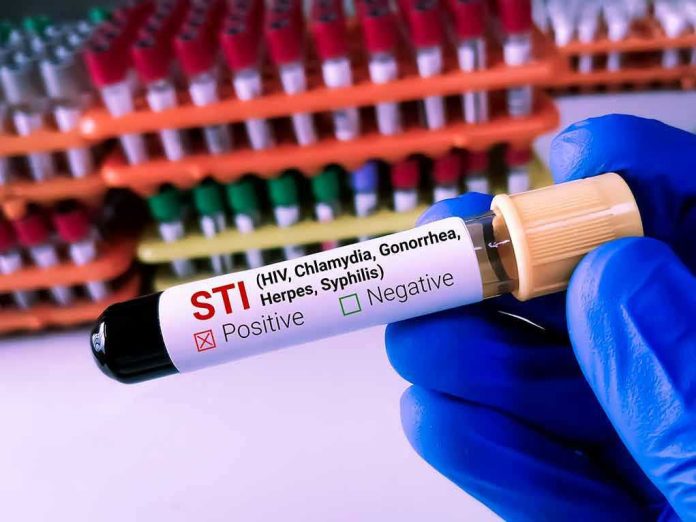
Millions of lives now hang in the balance as abrupt funding cuts threaten to erase decades of progress against HIV, tuberculosis, and malaria—raising the possibility of a humanitarian crisis unlike any seen since the early 2000s.
Story Snapshot
- Global health programs have been upended by sudden funding cuts from major donors, especially the U.S.
- Essential services in over 120 countries are closing or scaling back, leaving millions vulnerable.
- Projected disease spikes could reverse hard-won progress, with children and the poorest facing the worst outcomes.
- Experts warn that only immediate renewed funding can prevent catastrophic setbacks and loss of life.
Global Health Programs Teeter on the Edge
January 2025 marked the beginning of an unprecedented disruption: U.S. aid suspension triggered a domino effect, freezing international support for the fight against HIV, TB, and malaria. The Global Fund—pillar of disease control in 120 countries—faces an uncertain future, with its next funding cycle in November 2025 clouded by donor hesitation. National health programs, long dependent on external support, have been forced into triage mode: staff layoffs, diagnostic shortages, and shuttered clinics have become the new reality. Even the World Health Organization has sounded the alarm, calling for urgent action as the health systems of low- and middle-income countries buckle under the strain.
Case notifications for tuberculosis alone have dropped by 14% in the first half of 2025 compared to the previous year. This is not just a bureaucratic hiccup; it means infections are going undetected and untreated, setting the stage for a resurgence that could sweep through communities. The interconnected nature of HIV, TB, and malaria control efforts compounds the crisis: loss of funding in one area amplifies risks in the others, threatening to unleash overlapping epidemics that overwhelm fragile health infrastructures.
Humanitarian and Economic Fallout: The Toll of Inaction
The human cost of these funding cuts is staggering. Children and people living with HIV are most at risk, with projections of 8.9 million additional child TB cases and 1.5 million child deaths over the next decade if funding is not restored. In sub-Saharan Africa and South Asia, where health budgets are stretched thin, the loss of external funding means entire communities lose access to prevention, diagnosis, and treatment. Economic consequences follow swiftly: sick populations drive up healthcare costs, erode productivity, and threaten the stability of already precarious national economies.
Public health experts caution that the loss is not just immediate. Decades of progress—painstakingly achieved through international collaboration—could unravel, making restoration of lost ground exponentially harder and more expensive. The COVID-19 pandemic demonstrated how quickly health gains can disappear when attention and resources waver. Now, with the specter of political instability looming in the wake of deteriorating public health, the stakes extend far beyond the disease burden itself.
Stakeholder Power and the Politics of Aid
Behind the funding decisions are powerful actors: donor governments, particularly the U.S., wield immense influence over which programs survive and which collapse. Recipient countries, often with little leverage, must navigate the fallout, attempting to protect vulnerable populations with dwindling resources. NGOs like Médecins Sans Frontières and technical agencies such as WHO scramble to fill the gaps, but their capacity to do so is limited without sustained international commitments. The Global Fund Board and U.S. Congress now hold the keys to the future of millions, with their next moves set to determine whether catastrophe can be averted.
Some experts advocate for increased domestic resource mobilization and health system integration, aiming for long-term sustainability. Others, however, stress that only renewed international funding can address the immediate crisis. Academic studies and field reports converge on one point: without urgent donor action, the world stands to lose not only lives but also the fundamental security provided by robust global health systems.
Expert Consensus: Urgent Action or Irreversible Setbacks
Modeling studies from Harvard and the WHO forecast catastrophic increases in disease cases and deaths if funding is not restored quickly. The message from industry leaders and frontline organizations is unequivocal: without renewed investment, millions will suffer, and future generations will inherit a global health landscape far less secure than today’s. The scale and speed of the current funding withdrawal—unmatched even during past financial crises—demonstrate the fragility of progress and the danger of complacency.
Restoring and increasing international funding is the only viable path to averting disaster. While long-term solutions require greater domestic investment and health system reform, the immediate funding gap cannot be bridged by these measures alone. The world is now at a crossroads: the decisions made in the coming months will determine whether the gains of the last twenty years are preserved or lost to history.
Sources:
EATG: US Foreign Aid Cuts Could Drive Millions of New TB Cases and Deaths
MSF: Global Health Risk—Funding Cuts Threaten Fight Against AIDS, TB, and Malaria
WHO: Impact of 2025 Funding Cuts
PMC: The Long-Term Impact of Funding Cuts
UNAIDS: Impact of US Funding Cuts












